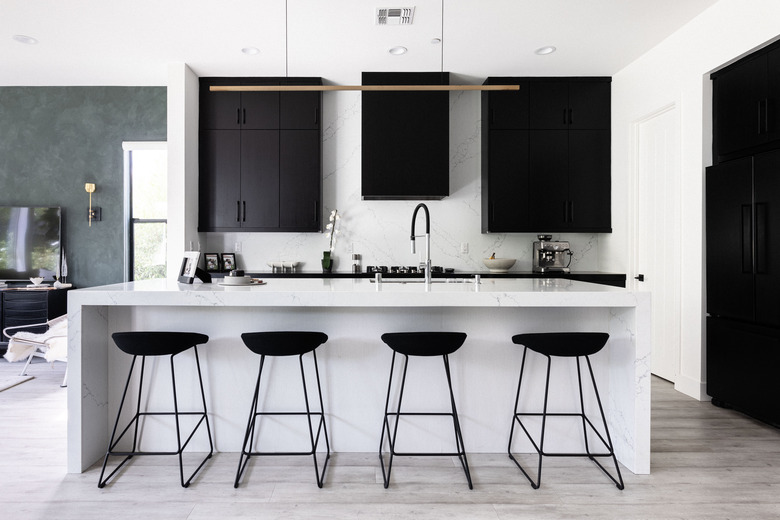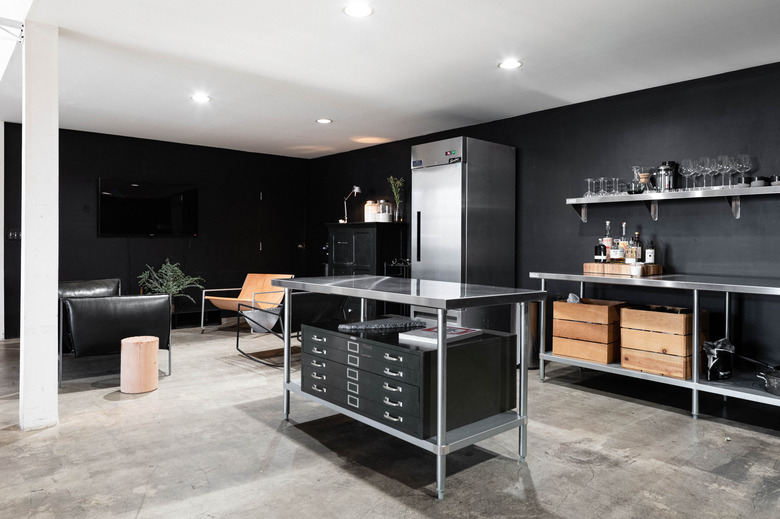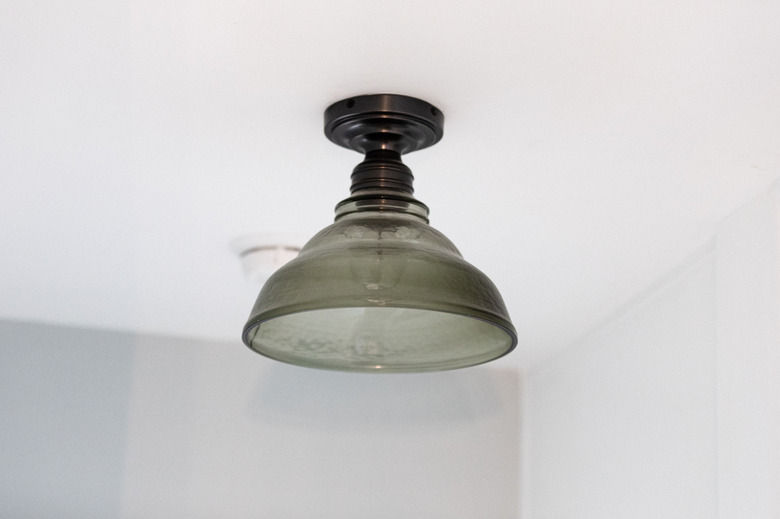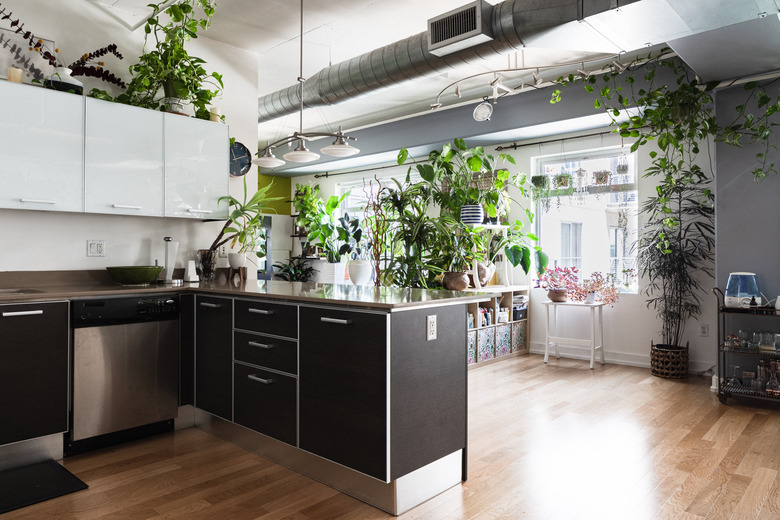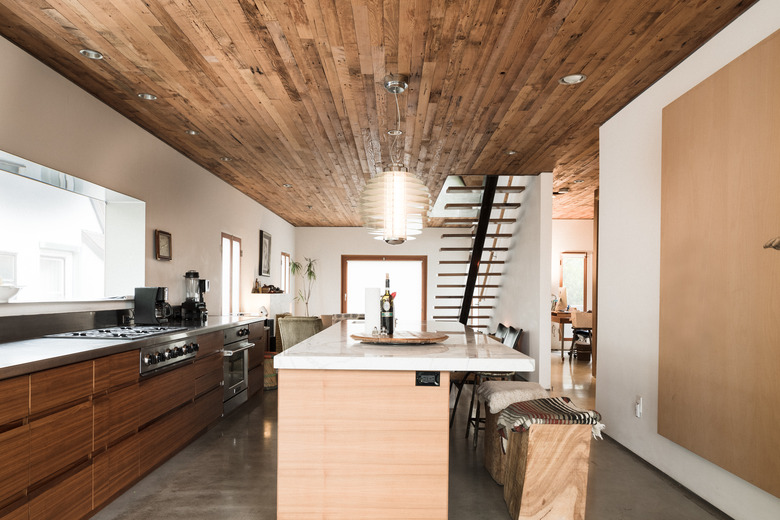Kitchen Lights: What Homeowners Should Know
Kitchen lighting is a critical factor in the design and completion of a modern kitchen remodel. Gone are the days when it was sufficient to have a single ceiling light fixture flush mounted in the center of the room. In the last 30 years, virtually everything about kitchens and kitchen lighting has changed. Kitchens are no longer places reserved just for meal preparation; now, a kitchen is very often the social hub of the home and is often the featured showpiece.
In today's kitchen, it's not unusual to find 10 or 12 individual light fixtures that are controlled by four or five different switches. The National Kitchen and Bath Association advises that kitchen light plans need to be especially flexible since the space serves several functions and is often used by several different people at the same time.
Three Layers of Kitchen Lighting
Three Layers of Kitchen Lighting
As you consider a kitchen lighting plan, it's helpful to use the same guidelines used by professional kitchen designers and lighting consultants, who generally build a kitchen lighting plan around three levels:
- Ambient lighting includes the fixtures providing the general illumination for the entire room. In kitchens with dining areas, ambient lighting often includes a hanging light fixture to illuminate the eating area as well as a centrally located ceiling light fixture. Ambient light fixtures are usually controlled by switches at the kitchen entrances.
- Task lighting includes fixtures that focus their light on the areas where food preparation or other routine kitchen duties occur. Almost all kitchens include a task light over the sink, but more full-featured kitchens may have additional task lights over a baking center, cutting board, stove and any other areas where regular food preparation or cleanup occurs. Task lighting is typically more intense than general ambient lighting, and each task light is controlled by its own wall switch.
- Accent lighting is optional and is sometimes omitted in small kitchens. Design professionals generally include some form of accent lighting to highlight attractive features of the kitchen, such as a granite countertop, attractive cabinetry or decorative dinnerware inside glass-doored cabinets.
A kitchen that includes all three levels of lighting signals that the kitchen has seen the efforts of a professional kitchen designer or an exceptionally knowledgeable DIYer.
Fixtures for Kitchen Lighting
Fixtures for Kitchen Lighting
There are several different types of light fixtures that can be used to create the three different levels of lighting.
- Surface or flush-mounted light fixtures are the classic type, mounted flush against the ceiling and typically in the center of the room. These light fixtures are generally used to provide ambient lighting, and they are sometimes integrated with ceiling fans.
- Recessed (canister) light fixtures are usually installed in groups when used to provide ambient lighting, but single fixtures can also be used to provide task lighting. These light fixtures are embedded in the ceiling or in finished soffits, creating a low profile that keeps the fixtures themselves understated.
- Track lights provide a very flexible form of lighting since individual lighting heads can be adjusted in whatever fashion you want along a ceiling-mounted track. Track lights are most often used for task lighting or accent lighting.
- Wall lights/sconces are light fixtures mounted along the wall, often with an upward-directed shade that casts the light upward. They are most often used for accent lighting and occasionally for ambient lighting.
- Hanging fixtures, including chandeliers, are usually used to provide ambient lighting, especially over dining tables.
- Pendant lights are small, hanging light fixtures usually installed in groups that can provide accent lighting, task lighting or even ambient lighting when mounted above a kitchen island or peninsula. This type of light fixture is currently very trendy and popular.
- Undercabinet/in-cabinet light fixtures come in a variety of forms in both plug-in low-voltage and line-voltage styles. They can include light "ropes" used to provide accent lighting beneath a cabinet or inside cabinets, small recessed lights or pucks to create spots of accent light on a countertop or minitrack lights used to light up decorative items.
The Science of Kitchen Lighting
The Science of Kitchen Lighting
The last prerequisite for understanding effective kitchen lighting is to know a little about the different types of light bulbs and the characteristics of their light:
- Incandescent light bulbs are the classic type, largely unchanged since their invention by Thomas Edison. These bulbs generate light when a thin metal filament inside a glass bulb glows as electricity passes through it. Known for their attractive, warm-colored light, incandescent bulbs are still used, but they are steadily losing ground to other types of bulbs that produce less heat and use less electricity.
- CFL (compact fluorescent) light bulbs are modified versions of the long fluorescent tubes used in utility shop lights. Fluorescent lighting is much more energy efficient than incandescent bulbs, but because the bulbs contain mercury, they have lost popularity to other forms.
- Halogen light bulbs are an improved version of incandescent lighting. Here, the bulb is filled with a small amount of inert halogen gas, which glows brightly from contact with an energized tungsten filament. These bulbs are quite small, making these light fixtures ideal for undercabinet lighting. However, they run very hot.
- Xenon light bulbs use a different inert gas to provide bright, even light that is similar to halogen bulbs but with lower temperatures and pressures. Safer than halogens, which can be prone to bursting, xenon bulbs last a very long time.
- LED (light-emitting diode) bulbs have now become the standard for nearly all ambient and most task lighting. These bulbs produce light when photons are released as a small amount of electricity flows through a semiconductor material. The energy efficiency of these bulbs is excellent, and new innovations allow the bulbs to emit a very attractive light that is nearly indistinguishable from incandescent lighting.
Light bulbs are also categorized according to the color of the light, which is measured in degrees kelvin (K). The bulbs used in residential light fixtures generally range from 2,000 K to 6, 500 K in color temperature:
- Warm white: These light bulbs emit light with a kelvin temperature of 2,000 K to 3,000 K.
- Cool white: These bulbs emit light with a temperature of 3,100 K to 4,500 K.
- Daylight: These bulbs emit light with a temperature of 4,600 K to 6,500 K.
The choice of light bulb color is a personal matter. Some people like the feeling of warmth that warm white bulbs produce, while others prefer light bulbs that more closely mimic natural daylight.
Kitchen Lighting Requirements and Guidelines
Kitchen Lighting Requirements and Guidelines
With some understanding of the types of light fixtures and the science of light color, you can now consider the requirements and design standards for kitchen lighting. The formal code requirements for kitchen lighting are relatively minimal. The National Electrical Code, a model code that serves as the basis for local electrical codes, requires simply that a kitchen must have a single 15-amp general lighting circuit controlled by a wall switch.
In practice, most designers will make this circuit a 20-amp circuit, and it's not uncommon for there to be two lighting circuits in a large kitchen. Designers also have a number of standard guidelines that they use to design the lighting scheme for a kitchen based on the three-level approach to kitchen lighting.
Ambient Kitchen Lighting
Ambient Kitchen Lighting
All kitchens require at least one centrally located ceiling fixture. If the kitchen has a dining area, the ambient lighting should also include a hanging light fixture for this space. This fixture should be smaller than the dining table by at least 12 inches in diameter and should be mounted 27 to 36 inches above it. The fixture should have illumination equivalent to that of a 120-watt incandescent light bulb.
Generally speaking, the total amount of ambient lighting should be chosen based on the size of the kitchen. The following minimum lighting levels are recommended:
- Small kitchens (75 square feet or less) should have a total ambient illumination equivalent to that of 150 watts of incandescent lighting.
- Medium-sized kitchens (up to 125 square feet) should have a total equivalent to 200 watts of incandescent lighting.
- Large kitchens (over 125 square feet) should have lighting computed on the basis of 2 watts per square foot.
If your kitchen is particularly dark or if it has very high ceilings — or if most of the lighting is provided by recessed lights — you should increase these illumination levels by at least 50 percent.
Task and Accent Lighting
Task and Accent Lighting
Make sure to fully illuminate any countertop areas where you regularly prepare food or conduct other routine tasks. This is a matter not only of convenience but of safety. Task lighting can be provided by several types of light fixtures that can be focused or aimed: recessed lights, pendant lights or track lights. This lighting should be controlled by separate switching — preferably a different switch for every task area. The lighting intensity should be somewhat stronger than for general lighting. LED light bulbs with a temperature rating of about 3,500 K are recommended.
Accent lighting is purely decorative and optional, and it is typically created with inconspicuous fixtures, such as rope lights running along the underside of cabinets, mini track lights or small recessed lights or puck lights placed inside glass-doored cabinets. For kitchen remodels where major wiring work is not planned, there are also low-voltage accent lights that can be attached to cabinets and plugged into existing outlets.
With accent lighting, you are trying to draw awareness to kitchen elements or to the light itself, not the light fixture hardware, which is often entirely hidden. Selecting the right kitchen features to highlight is critical. Illuminate only the kitchen features that are noteworthy.
Kitchen Lighting Installation
Kitchen Lighting Installation
Installing the electrical wiring, fixtures and switches for kitchen lighting circuits is generally done by professionals. Knowledgeable, skilled DIYers certainly are capable of doing this work, but they should not attempt it if there is any question about abilities. Moderately skilled DIYers will sometimes do the "rough-in" work and then call in a professional electrician to review the work and to make the final circuit-breaker connections at the service panel.
Most kitchen light fixtures are traditional "line-voltage" fixtures that are powered by standard 120-volt household electrical circuits. The wiring for light fixtures can vary considerably depending on the configuration of the circuit and the type of fixture, but all are installed in essentially the same way whether the work is performed by a professional electrician or a DIYer.
- Electrical boxes are installed for each wall switch and light fixture, solidly anchored to wall and ceiling framing. If the kitchen remodel has involved removal of existing wall surfaces, then this work is always done before the walls are finished.
- Electrical cables are then run from the wall switches to the light fixtures and to the circuit breaker box. Wiring configurations can vary considerably depending on where the switches are located relative to the light fixtures, so DIYers should have a good working knowledge of circuits before doing this work themselves.
- The "rough-in" work is then inspected by a city building inspector before the walls are enclosed. Remember that virtually all electrical work involving installation of new circuits requires applying for a building permit and at least one on-site inspection by a city inspector. The DIYer can expect the work to be carefully reviewed, but the inspector's interest is simply to make sure the work is safe. Neither building permits nor inspections are usually required if the project involves simply replacing kitchen lights.
- The devices — the wall switches and light fixtures — are connected to the circuit wiring after the drywall is installed and finished. In addition, each lighting circuit is now connected to its circuit breaker at the main circuit breaker box. Where required, the building inspector may return to make a final review of the work.
